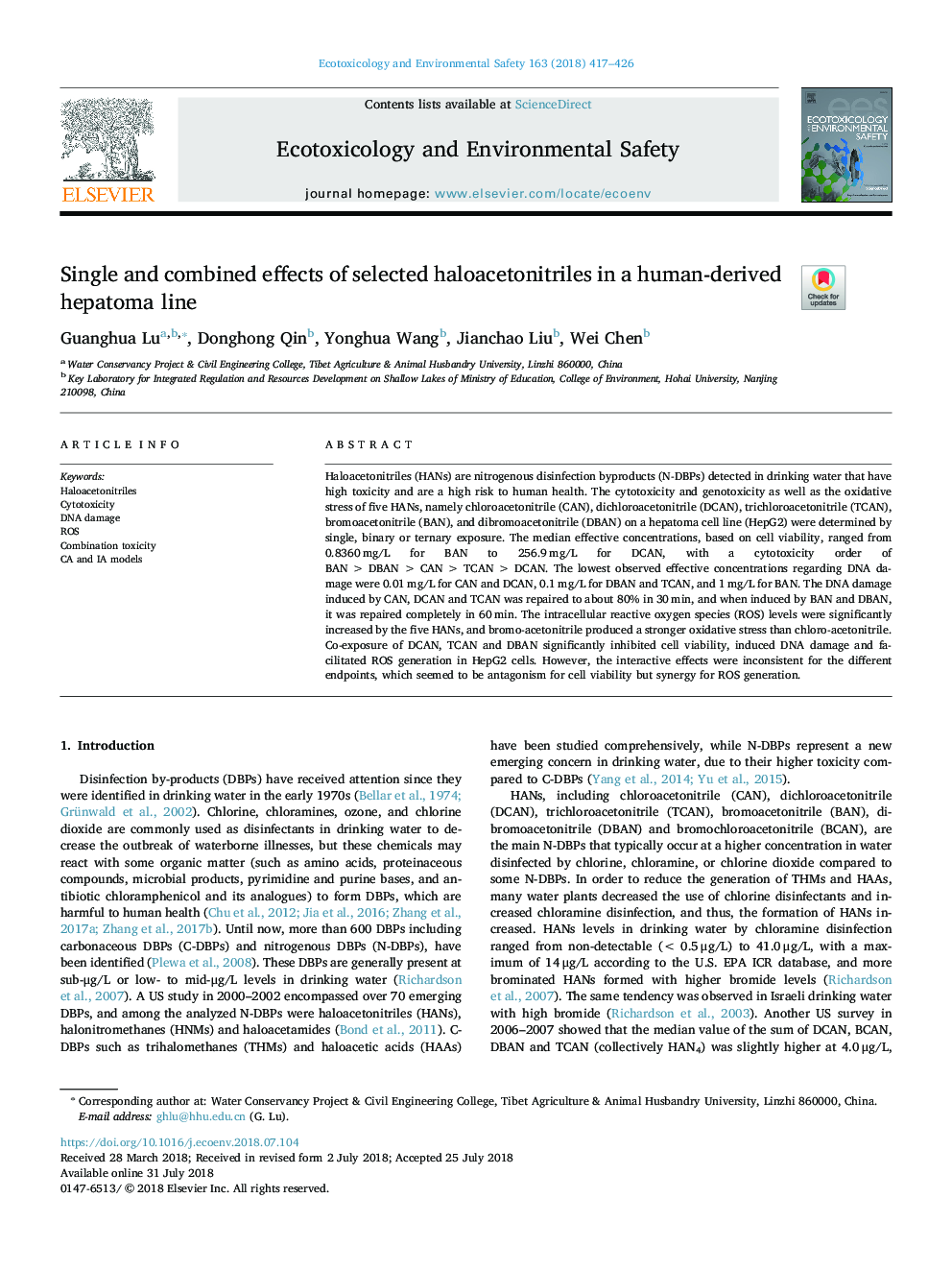| کد مقاله | کد نشریه | سال انتشار | مقاله انگلیسی | نسخه تمام متن |
|---|---|---|---|---|
| 8853194 | 1618901 | 2018 | 10 صفحه PDF | دانلود رایگان |
عنوان انگلیسی مقاله ISI
Single and combined effects of selected haloacetonitriles in a human-derived hepatoma line
ترجمه فارسی عنوان
اثرات تک و ترکیبی هالوآکتونیتریل های انتخاب شده در یک خط گوپتوم انسانی
دانلود مقاله + سفارش ترجمه
دانلود مقاله ISI انگلیسی
رایگان برای ایرانیان
کلمات کلیدی
موضوعات مرتبط
علوم زیستی و بیوفناوری
علوم محیط زیست
شیمی زیست محیطی
چکیده انگلیسی
Haloacetonitriles (HANs) are nitrogenous disinfection byproducts (N-DBPs) detected in drinking water that have high toxicity and are a high risk to human health. The cytotoxicity and genotoxicity as well as the oxidative stress of five HANs, namely chloroacetonitrile (CAN), dichloroacetonitrile (DCAN), trichloroacetonitrile (TCAN), bromoacetonitrile (BAN), and dibromoacetonitrile (DBAN) on a hepatoma cell line (HepG2) were determined by single, binary or ternary exposure. The median effective concentrations, based on cell viability, ranged from 0.8360â¯mg/L for BAN to 256.9â¯mg/L for DCAN, with a cytotoxicity order of BANâ¯>â¯DBANâ¯>â¯CANâ¯>â¯TCANâ¯>â¯DCAN. The lowest observed effective concentrations regarding DNA damage were 0.01â¯mg/L for CAN and DCAN, 0.1â¯mg/L for DBAN and TCAN, and 1â¯mg/L for BAN. The DNA damage induced by CAN, DCAN and TCAN was repaired to about 80% in 30â¯min, and when induced by BAN and DBAN, it was repaired completely in 60â¯min. The intracellular reactive oxygen species (ROS) levels were significantly increased by the five HANs, and bromo-acetonitrile produced a stronger oxidative stress than chloro-acetonitrile. Co-exposure of DCAN, TCAN and DBAN significantly inhibited cell viability, induced DNA damage and facilitated ROS generation in HepG2 cells. However, the interactive effects were inconsistent for the different endpoints, which seemed to be antagonism for cell viability but synergy for ROS generation.
ناشر
Database: Elsevier - ScienceDirect (ساینس دایرکت)
Journal: Ecotoxicology and Environmental Safety - Volume 163, 15 November 2018, Pages 417-426
Journal: Ecotoxicology and Environmental Safety - Volume 163, 15 November 2018, Pages 417-426
نویسندگان
Guanghua Lu, Donghong Qin, Yonghua Wang, Jianchao Liu, Wei Chen,
